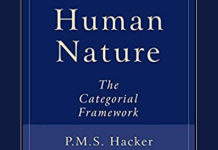I am an academic psychologist interested in individual and collective forms of distress in relation to experiences of nature, the climate crisis and environmentalism. My intention here is to talk through what I see as some of the connections between critical approaches to psychology/psychiatry, experiences of emotional distress and the Anthropocene – a new(ish) name for the complex combination of climate and ecological crises we are living through.
The term was originally proposed by atmospheric scientist Paul Crutzen at the turn of this century and then taken up by geologists, advancing the idea that in the far future, proof of our planet-dominating existence will be noticeable in rock strata, to anyone or anything willing and able to pay attention. This is because, it is claimed, evidence of our existence will be condensed into a distinct layer, about a quarter-inch thick, made up of an anthropogenic cocktail including nitrogen and phosphates, carbon spheres, radioactive elements, chicken skeletons and plastic detritus.
The Anthropocene has quickly gained prominence more generally as a way of framing the current era in which, for the first time in its history, the Earth is being deeply transformed by one species – the human (Anthropos is Greek for human; the –cene suffix refers to a substantial geological time period within the current 65-million-year-old Cenozoic era). It has become shorthand for what anthropocene.info describe as the ‘overwhelming global evidence that atmospheric, geologic, hydrologic, biospheric and other earth system processes are now altered by humans’. What this signifies may already seem unsurprising, but it is absolutely remarkable that we are now talking about the impact of human activity as it has accumulated over the last 300 years, perhaps even the last 70, radically unsettling the Earth’s biodiversity, carbon cycles, climate, ocean chemistry and so on, on a scale equivalent to deep-time processes – millions of years of slow evolution in the making.
What has the Anthropocene got to do with experiences of emotional distress? Back in 2007, the environmental philosopher David Kidner asserted that ‘psychological distress is likely to arise within an ecological context that is becoming increasingly degraded’. At its simplest the Anthropocene is a way of deepening our understanding of this degradation and human responsibility for it. Many more have followed Kidner in highlighting the manifestations of distress that emerge in response, including the Climate Psychology Alliance (which I am a member of), drawing on psychoanalysis amongst other perspectives. Fallout from ecological degradation, extinction and climate crisis can of course be direct and immediate – hunger, thirst, fear; experiencing precarious water supplies in a drought; fleeing for safety at a rapidly encroaching forest fire; the loss of home, familiar landscape; migration from places made incrementally or instantaneously uninhabitable by a changed climate, rising seas, pollution.
The individual and collective body can be marked in many more ways by the shock of the Anthropocene. On a personal and social level, the Anthropocene threatens our taken for granted certainty in the ongoingness of our world, a point captured elegiacally by eco-philosopher Joanna Macy in her memoir Widening Circles:
“[U]ntil the late twentieth century, every generation throughout history lived with the tacit certainty that there would be generations to follow. Each assumed, without questioning, that its children and children’s children would walk the same Earth, under the same sky… that certainty is now lost to us… that loss, unmeasured and immeasurable, is the pivotal psychological reality of our time”
We are threatened with the loss of species, habitats, landscapes, but also a deeply engrained way of life, and the idea of an open-ended future, even if we rarely stopped to think about it. A note of caution should be offered about the use of ‘we’ here. Loss on this kind of scale is not novel for many communities. As Heather Davis and Zoe Todd point out, for Indigenous peoples, ‘the Anthropocene is not a new event, but only the continuation of practices of dispossession and genocide, coupled with a literal transformation of the environment, which have been under operation for the last five hundred years’. The Anthropocene raises lots of questions about responsibility for the kinds of environmental impacts it refers to, and the ability to withstand them. These include the ongoing legacies of colonialism and imperialism. Colonial power was and is about dispossession – a forced separation of people and place, the ‘environmental’ effects of which still reverberate deeply.
Yet even for those of us who have historically benefited from these practices, the Anthropocene arguably marks something profoundly unsettling. With the distress of loss comes a mixture of complex emotional responses – grief, mourning, denial, feelings of displacement and powerlessness. The fact that historical and ongoing human activity – our (some of our) actions – are responsible for these losses laces these experiences for many with guilt, anxiety and all the defensive reactions that tends to accompany them, conscious or otherwise. There are of course readily available models to frame these experiences, and related remedies which may provide some solace, a sense of control or certainty. These include psychiatric diagnoses and medication, but also consumerism, conspiracies, polarising worldviews, and the idealisation of ‘strong’ leaders. To say there is a mismatch between problem and solution here is something of an understatement – the root causes of these losses are still obscured by individualist and apolitical framings of ‘mental health’ that dominate the social, political and cultural landscape.
Related experiences of distress are being recognised in terms like eco-anxiety, environmental melancholia and ecological grief. The latter is defined by Ashlee Cunsolo and Neville Ellis as ‘The grief felt in relation to experienced or anticipated ecological losses, including the loss of species, ecosystems, and meaningful landscapes due to acute or chronic environmental change’. Any shift towards a vocabulary in which these experiences of loss, grief and mourning are recognised is no doubt positive. However, there is a danger here of an error familiar to critics of psychology and psychiatry. This is the tendency to reframe understandable collective responses as medical and individualised “mental health” problems; and with it an extension of the absurd logic of the best response to a ‘mental illness epidemic’ being the rolling out more pharmaceutical or cognitive-behavioural oriented support. This is already happening in and around applications of health psychology, whereby life in the Anthropocene is said to result in a ‘higher frequency of mental disorders’. The priority then becomes adaptation strategies, such as better access to healthcare systems, and better training for professionals. In other words, adapting the individual to the emotional impacts of the Anthropocene by extending the established infrastructure and language of a medicalised and individualised understanding of distress.
Things are changing. Recognition of the climate crisis as an existential as well as a material threat is increasingly public; and social justice asserted as a vitally important dimension of a meaningful collective response. An emerging wider movement emphasises the vital importance of establishing shared means of recognising loss, expressing grief and acceptance. Acknowledging loss collectively and publicly is an important step in facing up to the reality of the Anthropocene and the impossibility of carrying on ‘as normal’.
Articulating loss, grief and fear as shared is also a starting point for developing forms of mutual support, as the psychotherapist Rosemary Randall eloquently argued some time ago. It is also a potentially powerful foundation for the collective demand for change. This is what political philosopher Judith Butler refers to as ‘the militant potential of mourning’. In the context of the Anthropocene we see evidence of the power of recognising loss not just in exclusively human terms; but in public memorial ceremonies and remembrance days dedicated to lost species and landscapes; and in broader demands to ‘tell the truth’ about ecological and degradation. A starting point for meaningful action, but also for recognising the shared experiences of distress.
The Anthropocene encourages us to think about a bigger picture too, in terms of who or what counts as worthy of attentiveness, care and compassion. In my understanding, there is no doubt that the Anthropocene characterises a time of great worry and fear, but it is also an invitation to reflect and think differently about the relationship between humans and ‘nature’. Whilst the idea of the Anthropocene might seem to consolidate the notion of human influence on the natural environment, it also encourages us to consider the countless interrelationships and interdependencies that shape the co-constitution of the human with other forms of life. These vital interactions stretch from the microbiome – the vast microcosmos of bacteria, fungi, protozoa and viruses interacting on and inside the human body – to the wider biosphere – ocean trenches, subterranean root systems, lush rain forests, arctic glaciers and sprawling cities – wherever life is reciprocally formed.
Many approaches in psychology have always been profoundly interested in the part encounters, interactions and relationships play in shaping our personal and social realities, and their role in the origins and alleviation of suffering and distress. For the most part, it has been an almost exclusively human emphasis. I am interested in what happens if we extend an emphasis on the fundamental importance of the state or condition of being in relationship, taking in cross-species conversations and human relations with more-than-human worlds. Developments in psychology often depend on looking outside the discipline for invigoration and new ideas – drawing, for example, on feminism and postcolonialism. In recent years I have been drawn to a fascinating body of work emerging in human–animal studies, anthrozoology, transspecies psychology, multi-species ethnography and posthumanism – reflected in my book Anthropocene Psychology. This work invites us to pay attention to how other animals, species and natural entities are entangled in human societies, focussing on issues such as rights, responsibilities and justice. At the same time, it unsettles anthropocentrism, the ideology that human beings are the most important species, are in control, and that all problems can be solved by human technology and ingenuity.
At present, this might all appear indulgent or irrelevant in the context of the coronavirus, not least in terms of experiences of distress. Perhaps, but as I understand it, COVID-19 is a feature of the Anthropocene, with the virus seeming to have emerged at the heart of that precarious interconnectedness and interdependence with nonhuman life forms – from a nexus of cross-species relations. Numerous calls to revolutionise the ethical foundations of human-animal relations have followed, not just in halting the ‘wet markets’ of China, but in demands for the ‘end of meat’ – the radical reform and even abolition of the use of the factories and abattoirs of industrialised animal agriculture. Others begin to reimagine changes to underlying social systems and structures to reverse the ecological degradation so closely aligned with multiple forms of distress – working conditions, travel, pollution, access to wilder and more biodiverse places.
At the same time, COVID-19 reminds us that we, as a species, are not an exception, able to stand outside or above the ebb and flow of life on earth. This is of course unsettling, but there might yet be healing power in recognising our shared vulnerability and interdependence, that our future is one where we learn to recognise how profound our interdependence and interconnectedness with each other, other species, nature, really is. In this vein, philosopher of science Cecilia Åsberg argues that the Anthropocene can highlight the many ways in which ‘humanity is intimately bound up with non-human co-travellers on our shared planet; and that ‘our survival may depend on understanding the company we keep, within our bodies, attached to our bodies and around the world’.
In her wonderful essay responding to attempts to pathologise distress in the face of COVID-19, Lucy Johnstone argues that now more than ever ‘we need a new narrative of shared distress to replace the failed one of individual disorders’. I wholeheartedly agree. The shared nature of that distress extends to what it means to live in, and comprehend living in, the Anthropocene – giving rise to experiences of fear, loss, grief and mourning. In inviting us to recognise both human and more-than-human losses, the Anthropocene deepens the need for such a narrative whilst reaching out across the species barrier. In doing so there is hope, that we are finally coming back down to Earth.




[…] the social and psychological significance of contact with nature, especially in the context of our ongoing ecological crisis, I believe there’s good reason to think it […]